Kia Stonic VS Dacia Duster – Specs, Efficiency & Price Comparison
Which model is the better choice – the Kia Stonic or the Dacia Duster? We compare performance (100 HP vs 140 HP), boot capacity (352 L vs 517 L), efficiency (5.50 L vs 5 L), and of course, the price (19400 £ vs 16300 £).
Find out now which car fits your needs better!
The Kia Stonic (SUV) is powered by a Petrol or Petrol MHEV engine and comes with a Manuel or Automatic transmission. In comparison, the Dacia Duster (SUV) features a LPG, Full Hybrid or Petrol MHEV engine and a Manuel or Automatic gearbox.
When it comes to boot capacity, the Kia Stonic offers 352 L, while the Dacia Duster provides 517 L – depending on what matters most to you. If you’re looking for more power, you’ll need to decide whether the 100 HP of the Kia Stonic or the 140 HP of the Dacia Duster suits your needs better.
There are also differences in efficiency: 5.50 L vs 5 L. In terms of price, the Kia Stonic starts at 19400 £, while the Dacia Duster is available from 16300 £.
Compare all the key specs now and find out which model fits your lifestyle best!
Kia Stonic
The Kia Stonic is a compact crossover that seamlessly blends bold design with practical functionality. Its distinctive, eye-catching exterior is complemented by a well-crafted interior offering a comfortable ride and intuitive technology for today's drivers. The Stonic is perfect for urban environments, providing agility and efficiency without compromising on style or performance.
details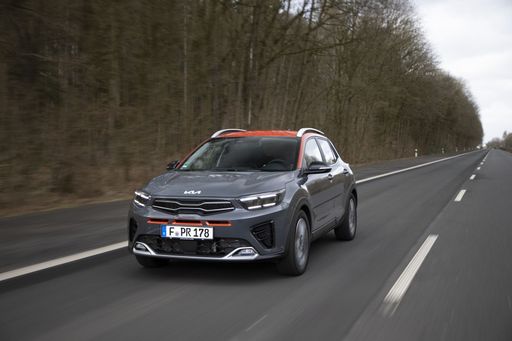 @ press.kia.com
@ press.kia.com
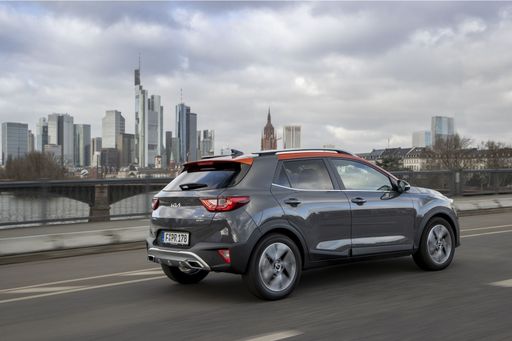 @ press.kia.com
@ press.kia.com
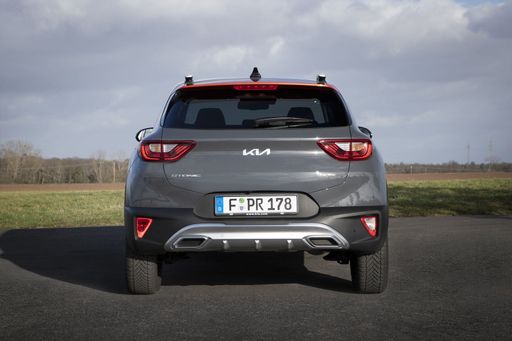 @ press.kia.com
@ press.kia.com
 @ press.kia.com
@ press.kia.com
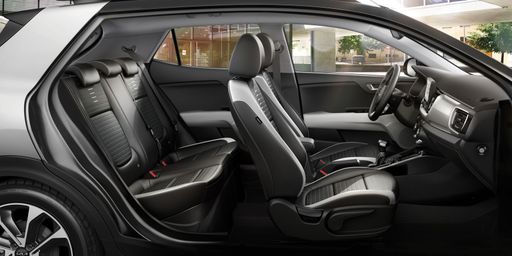 @ press.kia.com
@ press.kia.com
Dacia Duster
The Dacia Duster represents a compelling choice for those seeking an affordable yet robust SUV in the market. With its rugged design and practicality, it tackles both urban commutes and off-road adventures with ease. Inside, the vehicle offers a spacious cabin that ensures comfort, while maintaining its reputation for delivering excellent value for money.
details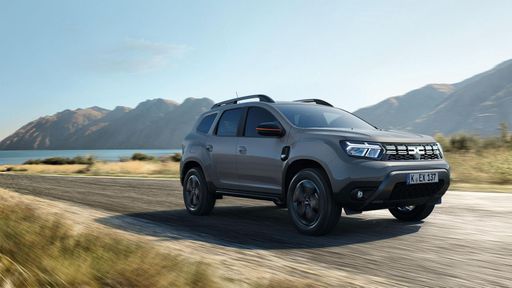 @ dacia-presse.de
@ dacia-presse.de
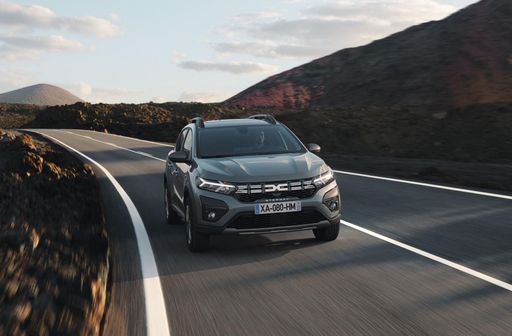 @ dacia-presse.de
@ dacia-presse.de
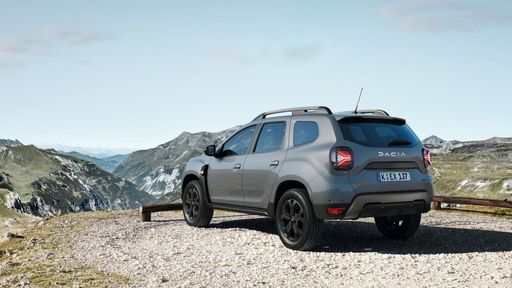 @ dacia-presse.de
@ dacia-presse.de
 @ dacia-presse.de
@ dacia-presse.de

|

|
|
|
|
Costs and Consumption |
|
|---|---|
|
Price
19400 - 25600 £
|
Price
16300 - 24800 £
|
|
Consumption L/100km
5.5 - 5.7 L
|
Consumption L/100km
5 - 8.1 L
|
|
Consumption kWh/100km
-
|
Consumption kWh/100km
-
|
|
Electric Range
-
|
Electric Range
-
|
|
Battery Capacity
-
|
Battery Capacity
0.60 kWh
|
|
co2
125 - 129 g/km
|
co2
114 - 147 g/km
|
|
Fuel tank capacity
45 L
|
Fuel tank capacity
49 - 55 L
|
Dimensions and Body |
|
|---|---|
|
Body Type
SUV
|
Body Type
SUV
|
|
Seats
5
|
Seats
5
|
|
Doors
5
|
Doors
5
|
|
Curb weight
1195 - 1260 kg
|
Curb weight
1351 - 1465 kg
|
|
Trunk capacity
352 L
|
Trunk capacity
430 - 517 L
|
|
Length
4140 mm
|
Length
4343 mm
|
|
Width
1760 mm
|
Width
1813 mm
|
|
Height
1505 mm
|
Height
1656 - 1661 mm
|
|
Payload
450 - 455 kg
|
Payload
414 - 430 kg
|
Engine and Performance |
|
|---|---|
|
Engine Type
Petrol, Petrol MHEV
|
Engine Type
LPG, Full Hybrid, Petrol MHEV
|
|
Transmission
Manuel, Automatic
|
Transmission
Manuel, Automatic
|
|
Transmission Detail
Schaltgetriebe, Automat. Schaltgetriebe (Doppelkupplung)
|
Transmission Detail
Schaltgetriebe, Automatisiertes Schaltgetriebe
|
|
Drive Type
Front-Wheel Drive
|
Drive Type
Front-Wheel Drive, All-Wheel Drive
|
|
Power HP
100 HP
|
Power HP
91 - 140 HP
|
|
Acceleration 0-100km/h
11.3 - 12.4 s
|
Acceleration 0-100km/h
9.9 - 14 s
|
|
Max Speed
176 - 179 km/h
|
Max Speed
160 - 180 km/h
|
|
Torque
172 - 200 Nm
|
Torque
160 - 230 Nm
|
|
Number of Cylinders
3
|
Number of Cylinders
3 - 4
|
|
Power kW
74 kW
|
Power kW
67 - 104 kW
|
|
Engine capacity
998 cm3
|
Engine capacity
999 - 1598 cm3
|
General |
|
|---|---|
|
Model Year
2024 - 2025
|
Model Year
2024 - 2025
|
|
CO2 Efficiency Class
D
|
CO2 Efficiency Class
D, C, E
|
|
Brand
Kia
|
Brand
Dacia
|
Kia Stonic
A Versatile Compact SUV: Introducing the Kia Stonic
The Kia Stonic stands out in the ever-crowded market of compact SUVs, offering a blend of practicality and style underpinned by advanced technology. With its robust build and dynamic aesthetics, the Stonic is designed to appeal to those seeking versatility without compromising on performance and comfort. Let's delve into the technical details and innovations that make the Kia Stonic a compelling choice.
Powertrain Options: From Traditional to Mild-Hybrid
The Kia Stonic features a range of engine choices to cater to diverse consumer needs. The traditional petrol engines are available alongside modern mild-hybrid variants, offering both manual and automatic transmission choices. This flexibility is further bolstered by its front-wheel drive system, delivering a smooth and controlled driving experience. The power output ranges from 79 to 100 PS, with fuel efficiency figures varying between 5.5 to 5.8 litres per 100 km, making it a cost-effective option for urban and suburban driving.
Performance Specs: Balancing Power and Efficiency
The Stonic's performance is defined by its agile handling and responsive power delivery. Its acceleration can take you from 0 to 100 km/h in approximately 11.3 to 14.2 seconds, with a top speed ranging between 158 and 179 km/h. The vehicle's torque is rated between 113 to 200 Nm, delivered effectively across its 3 to 4 cylinder configurations. The Stonic shines with its balance of performance and efficiency, appealing to eco-conscious drivers with its CO2 emissions rated between 125 to 132 g/km.
Innovative Design: Exterior and Interior
Measuring 4140 mm in length, 1760 mm in width, and 1505 mm in height, the Stonic provides a compact yet spacious interior. The model accommodates five passengers comfortably, with ample cargo space of 352 litres, ensuring practicality for everyday use. The exterior design reflects Kia's commitment to a sporty and sleek aesthetic, while the interior is equipped with user-friendly technology aimed at enhancing driver convenience and comfort.
Price and Value: An Attractive Offering
The Kia Stonic is priced between €22,490 and €29,680, depending on the chosen model and specifications. This positions it competitively within the compact SUV segment, offering high value through its quality build and suite of standard features. Monthly costs are manageable, ranging from €826 to €915, with a cost per kilometre between 33 to 36.6 cents, making the Stonic an economical choice for sustained ownership.
Conclusion: A Smart Choice for the Modern Driver
With its range of engine options, innovative design, and practical performance specifications, the Kia Stonic is well-suited for the modern driver seeking an efficient, stylish, and versatile vehicle. Its competitive pricing and exemplary fuel economy further contribute to its appeal, marking it as a standout choice in the compact SUV market.
Dacia Duster
Discovering the Duster: Dacia's Affordable SUV
The Dacia Duster has long been a go-to choice for those seeking an affordable yet competent SUV. Known for its robust design and versatility, the new 2024 model year offers even more options to fit a variety of needs. Let's delve into the technical details and innovative aspects that set the Duster apart.
Engine Diversity: Tailoring to Your Needs
The Dacia Duster doesn't disappoint when it comes to engine variety. With options ranging from Gas and Voll-Hybrid to Benzin Mild-Hybrid, there's something for everyone. The engine power spans from 91 to 140 PS, providing levels of performance suited to different driving styles. Notably, the hybrid options are a nod to the growing demand for more eco-friendly vehicles while still maintaining affordability.
Efficiency and Performance in Harmony
Efficiency is a key highlight of the Duster lineup. Fuel consumption rates from 5 to 8.1 litres per 100 km make it a great choice for budget-conscious drivers. Coupled with acceleration times ranging from 9.9 to 14 seconds for 0-100 km/h, the Duster provides a balanced blend of economy and performance.
Precision in Design: Dimensions and Interior Space
The Dacia Duster stands at 4,343 mm in length, 1,813 mm in width, and height varies between 1,656 to 1,661 mm. These dimensions create an ample interior, comfortably seating five passengers with a boot capacity ranging from 430 to 517 litres. This is further enhanced with the different trim levels such as Essential, Expression, Extreme, and Journey, each offering various features.
Advanced Drivetrain Options
Dacia has always been keen on providing choice in drivetrain configurations to cater to a wider audience. The Duster is available with both front-wheel and all-wheel drive options, powered by either a manual or automatic transmission. This flexibility ensures that the Duster can handle both urban commutes and off-road adventures with equal competence.
Technical Specifications: A Deep Dive
The Dacia Duster is equipped with a variety of technical features that ensure a smooth driving experience. It features a range of torque outputs from 160 to 230 Nm, depending on the model. The vehicle's weight varies between 1,351 and 1,465 kg, which aids in its adept handling and stability. Moreover, the Duster meets modern safety expectations with CO2 emissions ranging from 114 to 147 g/km. The SUV's CO2-Effizienzklasse spans from D to E, reflecting its environmental considerations.
Conclusion: A Solid Choice in the SUV Market
The Dacia Duster remains a solid choice for drivers seeking an SUV that combines affordability, efficiency, and versatility. With its wide range of configurations and technical prowess, it continues to be a competitive player in the SUV segment. Whether you're after fuel efficiency, a bit more power, or the capability of off-road adventures, the Duster has you covered.
The prices and data displayed are estimates based on German list prices and may vary by country. This information is not legally binding.
